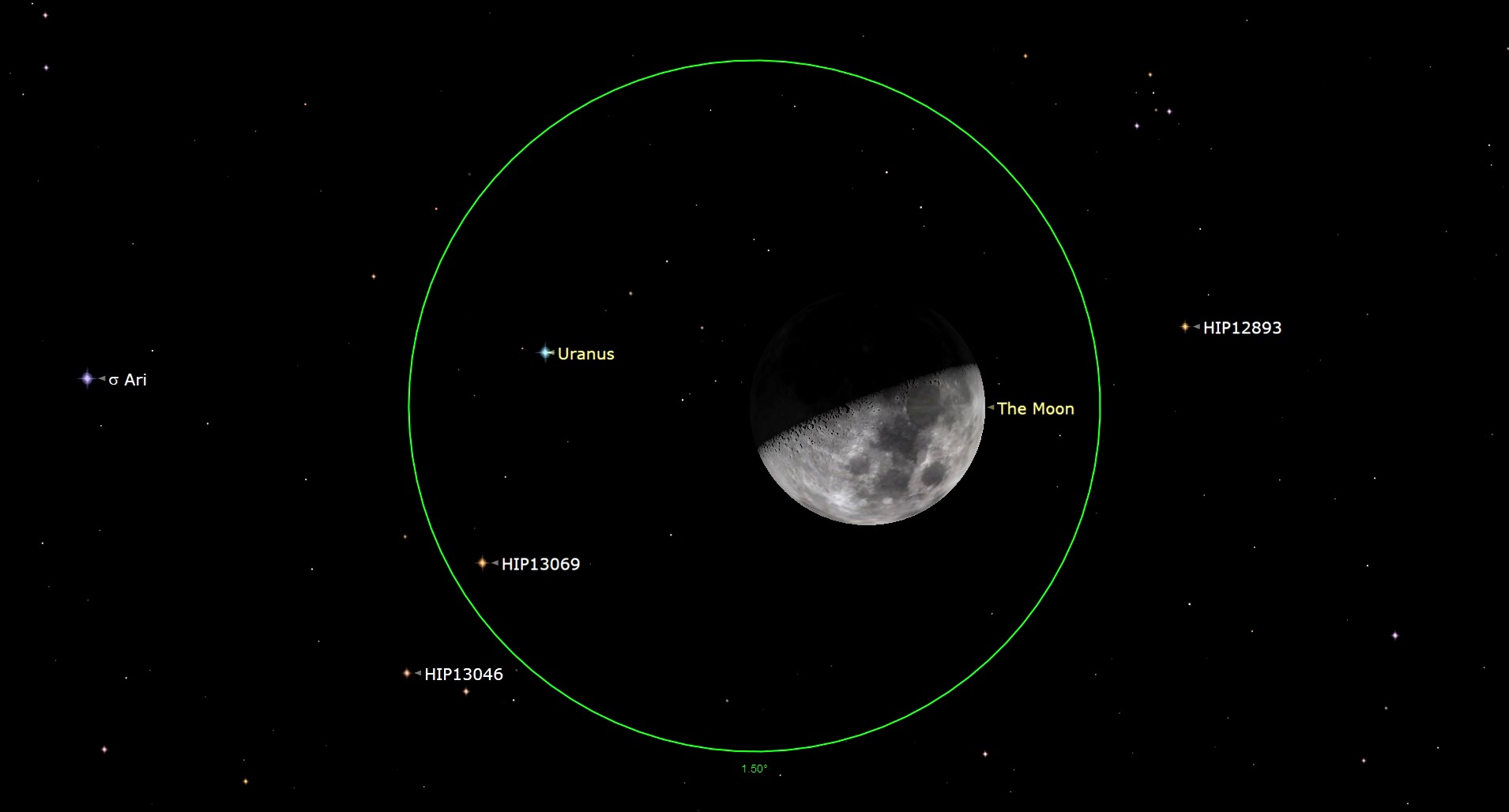Watch the moon eclipse Uranus tonight
The distant ice giant will disappear behind the moon in some regions, and in other places will appear close beside it.

On Saturday (Jan. 28) the moon will move in front of Uranus obstructing the view of the distant ice giant planet and causing it to disappear from the night sky in an arrangement that astronomers call a lunar occultation.
The moon will be in its first quarter tonight, will its face half illuminated, while Uranus will have a magnitude of 5.7. According to In-the-Sky, the lunar occultation of Uranus will be visible from regions including Canada, Greenland, and eastern Alaska. During the event, the moon and Uranus will be in the Aires constellation, The Ram.
In areas such as New York City where the moon will not cover Uranus, skywatchers may instead be able to see a close conjunction between the two celestial bodies. Whether this close conjunction can be seen or not will depend on if the moon and Uranus are above the horizon at the time of the occultation.
Related: Uranus: Facts about the ringed planet that sits on its side

Want to get a good look at Uranus? We recommend the Celestron Astro Fi 102 as the top pick in our best beginner's telescope guide.
From Canada, the moon will cover Uranus from 1:42 p.m. to 11:53 p.m. EST (1842 to 0453 GMT). In Alaska, the occultation will be visible from 10:38 a.m. until 11:24 p.m. EST (1538 until 0424 GMT), while in Greenland it will be seen from 4:27 a.m. to 11:58 a.m. EST (0927 to 0458 GMT).
All lunar occultations are only visible for a small area of the planet. This is because the moon is much closer to Earth than the planets of the solar system, for instance, the moon is around 239,000 miles (384,400 kilometers) from Earth while Uranus is approximately 1.8 billion miles (2.9 billion km) away, on average.
The moon's proximity to Earth means that its position in the night sky depends on the location on our planet from which it is being observed. On opposite sides of the planet, that means the moon's position shifts by as much as 2 degrees.
Breaking space news, the latest updates on rocket launches, skywatching events and more!
As a result, while the moon passes in front of a planet such as Uranus as seen from one side of Earth, observers on the other side of the planet will see the two together in the sky but separated by as much as 2 degrees.
As a result, though many skywatchers won't be able to view the lunar occultation of Uranus on Saturday, the arrangement will give them an excellent guide to look for the ice giant with a telescope or binoculars.
Uranus is the seventh planet from the sun and is also the solar system's third-largest planet after the gas giants Jupiter and Saturn. The tremendous distance between Earth and Uranus means that, unlike those two gas giants, this ice giant isn't visible in the sky without the aid of binoculars or a telescope.
If you're hoping to spot the lunar occultation of Uranus, our guides for the best telescopes and the best binoculars are a great place to start. Don't forget a moon filter! For skywatchers aiming to snap photos of the night sky, check out our guide on how to photograph the moon, as well as our best cameras for astrophotography and best lenses for astrophotography.
Editor's Note: If you snap the lunar occultation of Uranus, and would like to share it with Space.com's readers, send your photo(s), comments, and your name and location to spacephotos@space.com.
Follow us @Spacedotcom, or on Facebook and Instagram.

Robert Lea is a science journalist in the U.K. whose articles have been published in Physics World, New Scientist, Astronomy Magazine, All About Space, Newsweek and ZME Science. He also writes about science communication for Elsevier and the European Journal of Physics. Rob holds a bachelor of science degree in physics and astronomy from the U.K.’s Open University. Follow him on Twitter @sciencef1rst.
